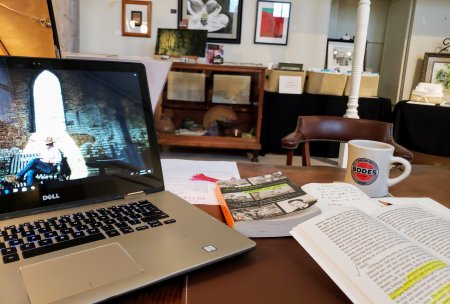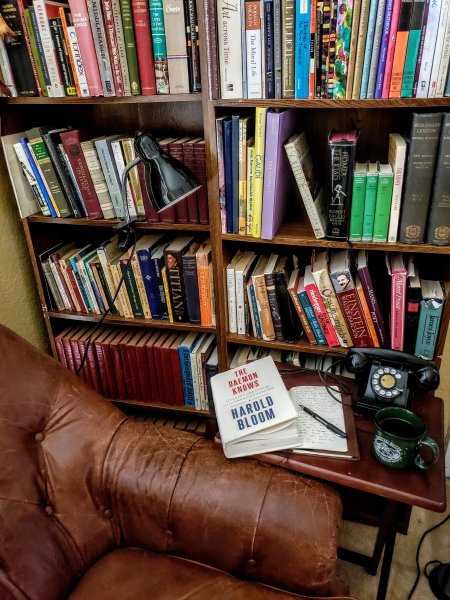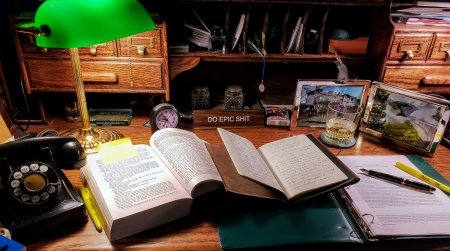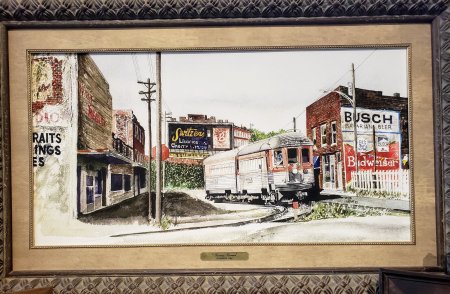Emerson’s organized, persistent, purposeful journal keeping is one of the most striking aspects of his early intellectual life. He wrote constantly, he wrote about everything, he covered hundreds of pages. When he had nothing to say, he wrote about having nothing to say. . . . He laughed at much of it when he read it over, inserting comments such as “dead before it reached its subject,” but he kept at it.
Robert D. Richardson Jr., Emerson: The Mind on Fire



Pages from Journals of a More Creative Past
The delicious part of my mornings during these retrement years is usually spent at my desk, reading with pleasure over cups of hot, French-pressed coffee, while cafe music plays from Youtube. In the midst of this morning’s reading, I suddenly detoured to swan-dive into my old journals, using passages from some of them to flesh out the memoir I’ve been drafting for over a month now.
Somewhere around 1985, I began scrawling journal entries on loose paper to place in manila file folders, and by the fall of 1988, when I began teaching full-time, began purchasing notebooks to keep these pages bound. By 1990, Emerson became my hero of journaling, and I became more obsessed with saving my notebooks, though I never indexed my ideas the way he did, and probably never will.
For about the past decade, I have shared with many friends my conviction that, despite the feeling that I am thinking and synthesizing better now than ever before, I still sense a malaise in the quality of my journaling. In former days, I sketched much more on my pages, collaged images, and inserted many more notes from my reading, accompanied with my own critical observations. Those cross-fertilizations are not happening of late, and when I tried to explain to my sister why my journals were growing stale, she raised an eyebrow and replied: “Running out of words?” A good moment!

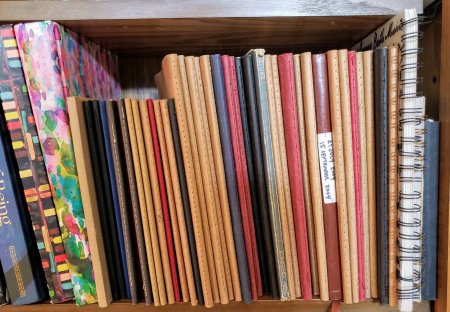

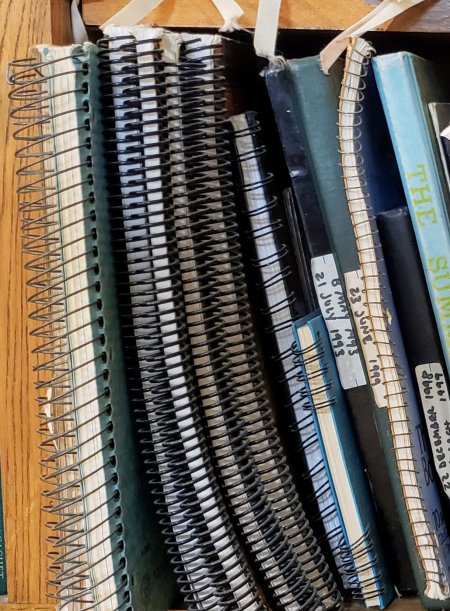
My Entire Assembly of Journals
At any rate, I have resolved in 2019 to find ways to freshen my journaling practice. The habit is firmly in place–I scribble daily–but I am getting bored by the lackluster content of my scribbling. And I am bored from looking at pages filled only with words; I need to return to collaging, drawing, and designing. My real hero of the journal is not Emerson as much as Leonardo da Vinci. Throughout my years of teaching philosophy, art history and art studio, I have urged my students to take up his practice of what I call sketchbook/journaling, to devote time to writing out one’s thoughts as well as drawing and designing. I used to do that long ago, but got away from the practice.
I also plan to be more aggressive in my journals in the exploration of my fleeting thoughts and ideas, not just essay topics. I once read that journals were maps for organizing wonder; I feel that much of the wonder and magic have been drained from my own journaling, and I am ready to recapture that.
Quoting again from Richardson’s Emerson biography:
He was now trying to capture not just major conclusions and insights, but the slightest, most evanescent hints and glimmers that rose to the surface of his mind and then as quickly sank from sight: “For the best part . . . of every mind is not that which [a person] knows, but that which hovers in gleams, suggestions, tantalizing unpossessed before him.” Emerson’s journals show that for years he fished along the edges of consciousness, eager to note down the smallest fresh suggestion or hint of a suggestion. . . . These were all struggles to forestall and cheat the repressive processes of the mind, to snatch and write down everything that reached the surface of consciousness. Much of Emerson’s journal is not intended as finished work or public utterance, nor even as the record of private conviction. He is concerned to explore–and then to save–impulses, essays, hints, trials, spurts, exaggerations, the most fleeting and evanescent flowers of the mind.
Emerson left behind a collection of over 263 volumes of journals. Long ago, I stopped worrying over my quantity of volumes; I simply hope to recover some quality as I proceed.
Thanks for reading.
I make art in order to discover.
I journal, hoping to recapture the magic.
I blog, always realizing I am not alone.





